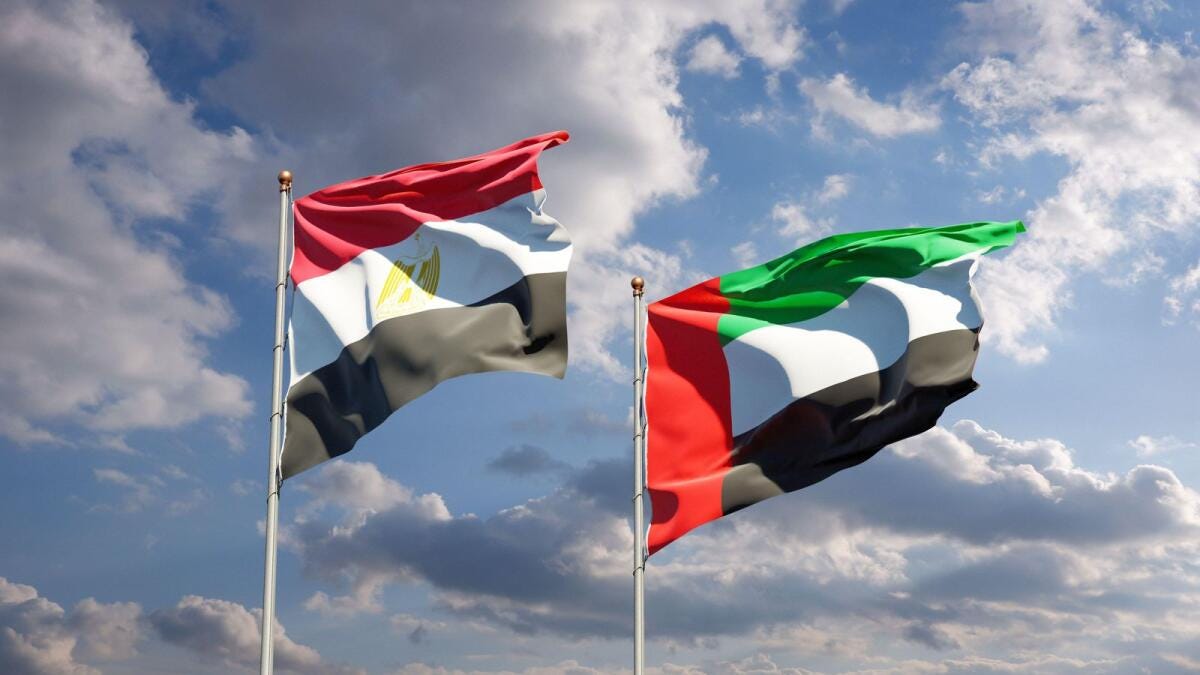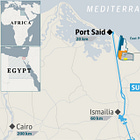Gulf-funded, Gold-tied: Egypt’s Growing Dependence on the UAE
Emirati investment and gold trade bolsters Abu Dhabi's regional edge, at the cost of Cairo's independence.
Abu Dhabi has entrenched its economic influence over Egypt through a strategic blend of trade, investment, and infrastructure development, with gold as the linchpin of this relationship. This dynamic provides Egypt with short-term liquidity but fosters dependency, compromising its economic sovereignty and long-term development prospects. The trade relationship, dominated by high-value, low-labour commodities like gold, alongside major investments such as the $35 billion Ras al-Hekma deal, underscores a structural imbalance that positions Egypt as a peripheral actor in the UAE’s regional economic network.
Gold as the Cornerstone of Trade
The UAE is Egypt’s largest foreign investor and a critical trading partner, with bilateral trade heavily centred on gold and jewellery, which account for over 60% of Egypt’s exports to the Emirates. Driven by speculative demand, this trade generates minimal employment or technological advancement, locking Egypt into a peripheral role as a supplier of raw or semi-processed goods. The UAE, leveraging its advanced infrastructure, refines and re-exports these commodities, capturing significant value-added benefits.
Egypt’s role as a conduit for regional gold trade deepens this dependency: over 60 tons of unregulated gold, much of it smuggled from Sudan, transited through Egypt to UAE refineries in 2023 and 2024. This largely untaxed and unmonitored trade casts Egypt as a rent-seeking intermediary, reinforcing economic subordination and limiting a robust manufacturing base.
Emirati investments, especially along the Suez Canal, cement the UAE’s strategic grip on the India-Middle East-Europe Economic Corridor (IMEC), linking Europe, the Middle East, and Asia. The $35 billion Ras al-Hekma deal, with $24 billion in direct investment and $11 billion in converted loans, provides critical liquidity for Egypt’s capital shortages but grants the UAE long-term control over Mediterranean coastal assets. This enclave-style model prioritises elite consumption and land monetisation over transformative development, undermining industrial growth and economic resilience.
Investing in IMEC
Egypt’s increasingly financialized economy relies heavily on gold to manage liquidity, stabilise foreign exchange, and facilitate opaque state-to-state deals amid capital shortages and currency fluctuations. The Ras al-Hekma deal exemplifies Emirati influence: while providing immediate relief, it risks long-term control over strategic assets and echoes historical foreign dominance.
This unequal trade and investment dynamic has cemented Abu Dhabi’s leverage over Egypt’s infrastructure. The UAE’s model, framed as economic diversification support, centres on extractive trade and infrastructure control, prioritising its interests over Egypt’s structural transformation.
Deepening Dependency
Geopolitical constraints, including U.S. sanctions on over 60 individuals and scrutiny from the IMF and G7, amplify Egypt’s reliance on the UAE. Gold exports serve as a mechanism to bypass dollar-based payment restrictions, mirroring tactics of sanctioned economies like Iran and Venezuela. The UAE’s role as a hub for illicit trade (smuggled Sudanese gold) strengthens its leverage. By facilitating unregulated transactions (potentially through blockchain or non-dollar payment systems), Abu Dhabi positions itself as key in circumventing international financial oversight.
Unchecked, this trajectory risks reducing Egypt to a subordinate node in the UAE’s regional economic architecture, limiting prospects for diversified development or resilience against geopolitical volatility. Balancing immediate liquidity needs with strategies to foster industrial growth and autonomy remains Egypt’s critical challenge to avoid entrenched subordination.




